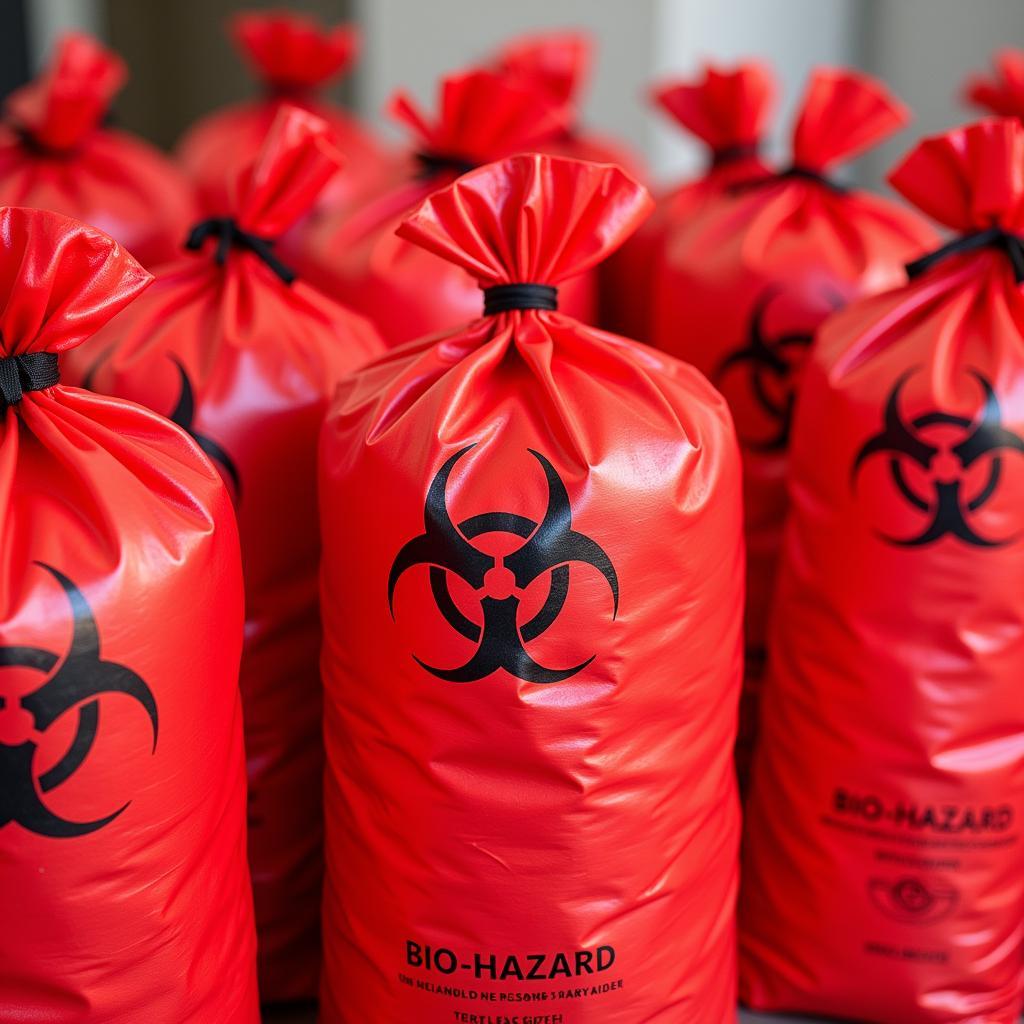Knowing which color bag is used for biohazard waste is crucial for maintaining safety and complying with regulations. This seemingly simple question has significant implications for healthcare facilities, laboratories, and even homes. Using the correct bag ensures proper handling and disposal of potentially infectious materials, protecting both people and the environment.
Understanding Biohazard Waste and Its Containment
Biohazard waste encompasses various materials contaminated with potentially infectious agents. This can include anything from used needles and bandages to lab cultures and animal carcasses. Proper containment is the first step in safely managing this waste, and choosing the right bag is paramount.
The Importance of Color-Coding
Color-coding is a universally recognized system for quickly identifying different types of waste. This system minimizes confusion and ensures that each waste type is handled appropriately. For biohazard waste, the designated color is typically red or orange. This bright, easily distinguishable color alerts everyone handling the waste to its potential dangers.
 Red Biohazard Waste Bags
Red Biohazard Waste Bags
Red Biohazard Bags: The Standard for Infectious Waste
Red bags are the most common choice for containing biohazard waste. This color immediately signals the presence of potentially harmful materials. Red bags are typically made of thick, puncture-resistant plastic to prevent leakage and protect those handling the waste. They also feature the biohazard symbol, further emphasizing their contents.
Why Red? The Psychology Behind the Choice
The color red is associated with danger and warning. This makes it an instinctive choice for signaling hazardous materials. Its high visibility ensures that biohazard waste isn’t accidentally mixed with regular trash.
Orange Biohazard Bags: An Acceptable Alternative
While red is the most common color, orange biohazard bags are also acceptable in some regions and for specific waste types. It’s essential to check local regulations and facility guidelines to ensure compliance.
When to Use Orange Bags
Orange bags are sometimes used for regulated medical waste that doesn’t necessarily pose an immediate infectious risk. This can include items like used sharps containers or contaminated lab equipment.
Ensuring Proper Disposal of Biohazard Waste
Choosing the correct bag is just the first step. Proper disposal is equally crucial. Biohazard waste typically undergoes specialized treatment, such as incineration or autoclaving, to neutralize any infectious agents.
Regulations and Guidelines
Various regulations govern the handling and disposal of biohazard waste. These regulations vary by region and the specific type of waste. Compliance with these regulations is vital for protecting public health and the environment.
Conclusion: Choosing the Right Bag for Biohazard Waste
Selecting the correct bag for biohazard waste—typically red or orange—is essential for safety and regulatory compliance. Understanding the color-coding system, following proper disposal procedures, and adhering to relevant guidelines are crucial for protecting both individuals and the environment from potential hazards. Choosing the right bag is a small step with big implications.
FAQs
- What is considered biohazard waste?
- Are there other colors used for biohazard bags besides red and orange?
- How should I dispose of biohazard waste at home?
- What are the penalties for improper disposal of biohazard waste?
- Where can I purchase biohazard bags?
- What is the biohazard symbol, and what does it signify?
- Are there different types of red biohazard bags for different materials?
Need support? Contact us at Phone Number: 0373298888, Email: [email protected] or visit our address: 86 Cầu Giấy, Hà Nội. We have a 24/7 customer service team.